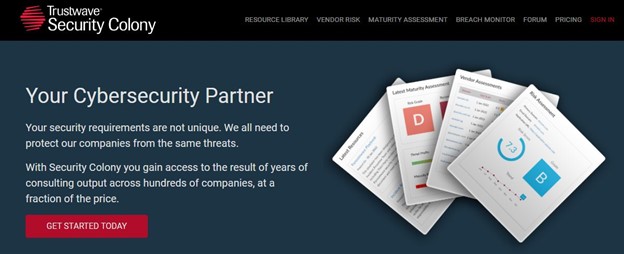
2023-6-20 08:0:0 Author: www.trustwave.com(查看原文) 阅读量:11 收藏
There is no downside for an organization to have a security awareness program in place. It may not be 100% effective in stopping workers from making an error and causing a cyber incident, but like any preventative endeavor such a program can reduce the possibility of a disastrous cyber incident from occurring.
An organization’s staff is on the front line when it comes to defending their place of work. Kind of a human firewall, if you will. Employees who are educated about various security risks and best practices act as a critical line of defense. Once trained these people can identify and respond to potential threats, such as phishing emails, suspicious attachments, or unauthorized access attempts.
The Need for a Well-Trained Staff
This training is particularly important in a world where email is a primary attack vector. The FBI’s 2022 Internet Crime Report noted business email compromise attacks were responsible for $2.5 billion in losses with phishing attacks resulting in another $52.1 million. Surely, it is important to teach workers what to be aware of what is coming into their inbox.
There are additional, non-cybersecurity, related reasons for having a well-trained staff. Most industries have to abide by a mountain of regulatory practices. Whether it’s HIPPA in healthcare, GPDR/CCPA compliance or PCI DSS for retailers.
Failure to comply with these requirements can result in hefty fines, legal consequences, and damage to the company's reputation. By establishing a Security Awareness Program, companies can demonstrate their commitment to regulatory compliance and data protection.
The result of a well-implemented training program the creation of a security culture inside the organization. When security becomes a shared responsibility and a core value, employees become more proactive in identifying and reporting security incidents, adhering to security policies, and embracing security as an integral part of their daily work routines. A strong security culture helps create a resilient and security-conscious workforce.
Security Awareness 101
Creating an awareness program is not easy. Not every person will take the training seriously and many will simply forget what they are taught.
Establish advocates and achieve buy-in: Gain support from top management and form a steering committee with representatives from various departments, including marketing and communications professionals, to help craft clear messaging and objectives.
Narrow your focus: Instead of overwhelming employees with numerous security topics, identify the most relevant themes that address the greatest risks specific to your organization and departments. Consider customizing training materials with the help of security companies like Trustwave.
Establish advocates and achieve buy-in: Gain support from top management and form a steering committee with representatives from various departments, including marketing and communications professionals, to help craft clear messaging and objectives.
Narrow your focus: Instead of overwhelming employees with numerous security topics, identify the most relevant themes that address the greatest risks specific to your organization and departments. Consider customizing training materials with the help of security companies like Trustwave.
Connect to real-life attacks: Use concrete examples of security breaches and other incidents to demonstrate the relevance and urgency of security awareness efforts. Show real-time attacks happening on networks to emphasize the potential consequences.
Make it about them: Relate security topics to employees' personal lives by highlighting how the knowledge and skills they gain can protect their own online activities, such as password management, mobile device security, and social media usage.
Execute mock attacks to establish effectiveness: Conduct simulated social engineering attacks, such as phishing tests, to assess the effectiveness of the awareness program. Communicate the plans in advance to maintain surprise and prevent employees from feeling violated.
Raise their emotional commitment: Help employees understand the potential harm that can result from poor security practices and clearly communicate the level of risk associated with their actions. Connect their individual behaviors to the overall well-being of the company.
Be flexible: Customize the message for different employee groups, considering their specific roles, responsibilities, and perceived needs. Some groups may require tailored training to address their unique security challenges.
Reward the top performers: Use incentives and gamification techniques to encourage positive security behaviors. For example, award points or prizes to employees who identify and report phishing attempts or engage in responsible security practices. Address unsafe behaviors as well to maintain accountability.
Reinforce the message: Avoid conducting training courses only once a year. Provide regular refresher sessions, use mediums like blogs, posters, and newsletters to reinforce key points, and integrate security awareness into the ongoing communication channels of the organization.
How Trustwave Security Colony Can Help
Security Colony is a powerful self-service resource for CISOs and management that gives them direct access to a variety of security and training tools that will allow them to self-diagnose problem or help improve their staff’s ability to deal with cybersecurity issues.
A Security Colony subscription varies in cost depending upon the level of service required and there is also a basic free version available.
The Security Colony Resource and Video Library – This area is where CISOs can go for off the shelf training aids. The Security Colony Resource Library contains 17 categories covering almost 400 topics. Trustwave has created all the documentation based on actual work we've conducted for organizations which we then make available to our subscribers. Security Colony's Video Library contains a wealth of information for folks looking for an introductory lesson on a particular topic, say phishing or identifying an insecure WiFi connection. Senior Trustwave consultants present the videos.
While not specifically a training tool, the Security Colony Maturity Assessment is a self-paced tool that will measure if an organization's security can defeat today's cyber threats. The threat assessment analyzes your industry and the nature and size of your business. It uses NIST Cyber Security Framework to assess your ability to identify, protect, detect, respond and recover appropriately to maintain a suitable level of security.
Click the image above for direct access to Security Colony’s services.
如有侵权请联系:admin#unsafe.sh
